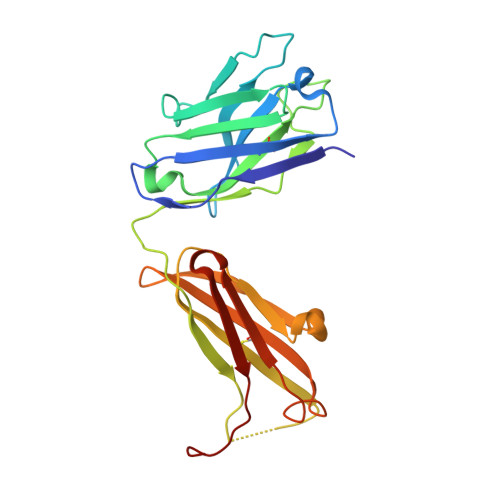Monoclonal antibody MN423 as a stable mold facilitates structure determination of disordered tau protein
Skrabana, R., Dvorsky, R., Sevcik, J., Novak, M.(2010) J Struct Biol 171: 74-81
- PubMed: 20184958
- DOI: https://doi.org/10.1016/j.jsb.2010.02.016
- Primary Citation of Related Structures:
3L1O - PubMed Abstract:
Flexibility of intrinsically disordered tau protein is important for performing its functions. It is believed that alteration of the flexibility is instrumental to the assembly of tau protein into paired helical filaments (PHF) in tauopathies. Tau flexibility represents the main obstacle for structure determination of its conformation in physiology and/or pathology. We have alleviated this inherited difficulty by using specific monoclonal antibodies as tau protein surrogate binding partners. In this work we compare two "antibody mold structures": (1) X-ray structure of the free form of the Alzheimer's disease PHF core-specific antibody MN423 and (2) previously solved structure of the complex of MN423 with the PHF core C-terminal tau peptide. We found that MN423 combining site is in both structures identical. As a consequence, recombinant tau assumes in the complex a fold determined by the antibody combining site. Obtained results show that MN423 functions as a molecular mold for the PHF core segment, and opens the way for structure determination of other PHF core segments providing that other conformation-specific antibodies are available. Data from in silico docking of tau peptide into antibody mold, obtained in this study, show that biochemical data and computational approaches provide results comparable to X-ray crystallography.
Organizational Affiliation:
Institute of Neuroimmunology, Slovak Academy of Sciences, Dubravska cesta 9, 845 10 Bratislava, Slovakia.


















